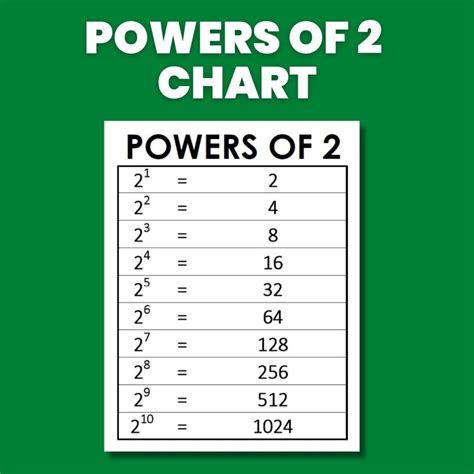Negative 3 To The Power Of 2
News Co
Apr 07, 2025 · 4 min read

Table of Contents
Deconstructing (-3)²: Exploring the Nuances of Negative Numbers and Exponents
The seemingly simple expression (-3)² often causes confusion, even among those comfortable with basic algebra. Understanding its solution requires a clear grasp of order of operations, the role of parentheses, and the behavior of negative numbers when raised to powers. This article delves deep into the intricacies of (-3)², explaining its calculation, common misconceptions, and its broader implications within the mathematical landscape.
Understanding the Order of Operations (PEMDAS/BODMAS)
Before tackling (-3)², let's refresh our understanding of the order of operations, often remembered by the acronyms PEMDAS (Parentheses, Exponents, Multiplication and Division, Addition and Subtraction) or BODMAS (Brackets, Orders, Division and Multiplication, Addition and Subtraction). These mnemonics highlight the sequential steps for evaluating mathematical expressions. The key here is that exponents are handled before multiplication or division.
This seemingly simple rule is crucial in solving problems involving negative numbers raised to powers. The parentheses in (-3)² explicitly dictate that the exponent applies to the entire term, including the negative sign.
Calculating (-3)²: Step-by-Step
To calculate (-3)², we follow the order of operations:
-
Parentheses: We first address the expression within the parentheses, which is simply -3.
-
Exponent: Next, we apply the exponent. This means we multiply -3 by itself: (-3) * (-3).
-
Result: The product of two negative numbers is a positive number. Therefore, (-3) * (-3) = 9.
Therefore, (-3)² = 9.
Common Misconceptions and Errors
Many misunderstandings arise from incorrectly interpreting (-3)² as -3². The absence of parentheses is crucial. Let's examine the difference:
-
(-3)²: Here, the square applies to the entire term (-3), resulting in 9 (as demonstrated above).
-
-3²: In this case, the exponent applies only to the 3, not the negative sign. This means we calculate 3² first (which is 9), and then apply the negative sign, resulting in -9.
The crucial difference lies in the presence or absence of parentheses. The parentheses explicitly group the negative sign with the 3, ensuring the exponent acts on the entire negative quantity. Without parentheses, the conventional order of operations interprets the expression differently.
The Significance of Parentheses in Mathematical Expressions
The example of (-3)² highlights the critical role of parentheses in clarifying the intended order of operations. Parentheses serve as grouping symbols, overriding the standard PEMDAS/BODMAS order and ensuring unambiguous calculations. Their proper use prevents misinterpretations and avoids errors, especially when dealing with negative numbers and exponents. In essence, parentheses act as instructions to the calculator or the person evaluating the expression, providing explicit steps to follow.
Extending the Concept: Negative Numbers and Higher Powers
The principles discussed for (-3)² extend to negative numbers raised to higher powers. Consider the following examples:
-
(-3)³: This is calculated as (-3) * (-3) * (-3) = -27. Notice that the product of three negative numbers is negative.
-
(-3)⁴: This evaluates to (-3) * (-3) * (-3) * (-3) = 81. The product of four negative numbers is positive.
This pattern reveals a general rule:
- A negative number raised to an even power results in a positive number.
- A negative number raised to an odd power results in a negative number.
Application in Real-World Scenarios
While (-3)² might seem like an abstract mathematical concept, understanding its calculation has practical applications in various fields:
-
Physics: Calculations involving vectors and forces often use negative numbers to represent direction. Squaring these values might be necessary to determine magnitude, requiring an understanding of how exponents affect negative signs.
-
Computer Science: Programming languages rigorously adhere to the order of operations. Understanding the difference between (-3)² and -3² is crucial for writing code that produces the correct results.
-
Finance: Financial models often utilize exponents for calculating compound interest or growth rates. Negative values could represent losses or debts, and understanding the effects of exponents on negative numbers is essential for accurate financial analysis.
-
Statistics: Statistical calculations often involve exponents in formulas for distributions, variance, and other measures. Correctly handling negative numbers raised to powers is paramount for accuracy in these calculations.
Beyond the Basics: Complex Numbers and Exponentiation
The concept of raising negative numbers to powers takes on further complexities when we consider imaginary and complex numbers. For instance, the square root of -1, denoted as 'i', introduces a new dimension to exponentiation. Understanding how exponents interact with complex numbers requires a more advanced mathematical foundation, extending beyond the scope of this article. However, the foundational principles of order of operations and the careful use of parentheses remain crucial even in these more complex scenarios.
Conclusion: Mastering the Nuances of (-3)²
The seemingly simple problem of (-3)² serves as a valuable reminder of the importance of precision in mathematics. A clear understanding of the order of operations, the significance of parentheses, and the behavior of negative numbers raised to powers is essential for accurate calculations across various fields. By grasping these principles, we can confidently navigate more complex mathematical expressions and avoid common errors. The careful use of parentheses is not just a stylistic preference but a critical aspect of ensuring accurate results, especially when working with negative numbers and exponents. This seemingly simple expression, therefore, acts as a gateway to deeper understanding in algebra and beyond.
Latest Posts
Related Post
Thank you for visiting our website which covers about Negative 3 To The Power Of 2 . We hope the information provided has been useful to you. Feel free to contact us if you have any questions or need further assistance. See you next time and don't miss to bookmark.